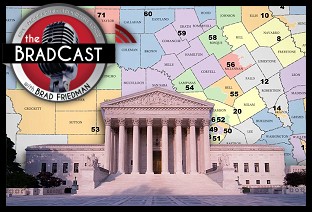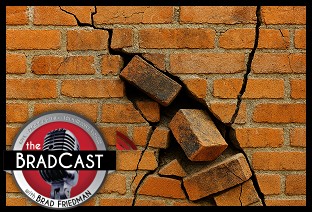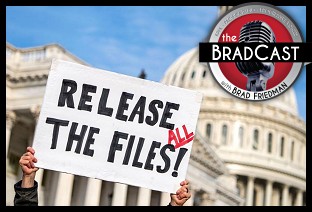Guest blogged by Ernest A. Canning
 Yesterday, The Post & Courier of Charleston, South Carolina reported that a local "Council of Governments [COG] approved a resolution...asking for the state to audit how its voting machines are working."
Yesterday, The Post & Courier of Charleston, South Carolina reported that a local "Council of Governments [COG] approved a resolution...asking for the state to audit how its voting machines are working."
The "machines" are the 100% unverifiable ES&S iVotronic touch-screen Direct Recording Electronic (DRE) voting systems.
The Post & Courier not only mentions the fact that state election officials insist that the "iVotronic machines reliably tally votes," but buys into the canard that "increased skepticism" is based upon [emphasis added] "human errors made during last year's elections." It adds that the COG resolution expressed "a concern [that the] voting machines...do not incorporate a 'paper trail' that could facilitate unequivocal confirmation of election results."
If there is any state in the nation that should realize that casting a vote on the ES&S iVotronic amounts to an exercise in blind-faith, with or without a so-called "Voter-Verifiable Paper Audit Trail" (VVPAT), it would be South Carolina...
It's the machines transparency, stupid!
While it might be helpful if the Palmetto State looked to their GOP neighbors in North Carolina, who filed a lawsuit seeking to ban the iVotronic after witnessing "widespread" touch-screen failures and vote flipping to Democratic candidates or to their neighbor to the south, Florida, which banned touch-screen voting systems after the 2006 fiasco in Democratic-leaning Sarasota County where the ridiculously high undervote rate (18,000 "lost" votes in the one county) reported by these unverifiable machines determined the outcome of a hotly contested Congressional race (decided by just 369 votes), the most compelling evidence for immediately removing (and destroying) every ES&S iVotronic is to be found in South Carolina.
If, as recently noted in "No Real Surprise in Recent Florida E-Voting Hack", Sarasota provided 2006's "canary in the electronic coal mine" moment, the DRE announcement that Alvin Greene won the 2010 South Carolina Senate Democratic Primary provided the "it's the machines transparency, stupid!" moment.
Greene was unemployed; virtually unknown. He had no campaign website, no volunteers, no campaign literature. He didn’t even own a computer or a phone. His opponent, the respected circuit judge and former state legislator Vic Rawl had raised hundreds of thousands of campaign dollars, appeared at 80 campaign events; had hundreds of volunteers.
The numbers were beyond absurd. Lancaster County paper absentee ballots went to Rawl 84% to 16%. The unverifiable touch-screens in the same county, however, said Rawl lost the it by 17%. Greene received more votes than were cast in 25 Spartanburg County precincts. The votes of 50 other precincts were missing from the final count. Statewide, the virtually unknown Greene somehow managed to captured 60% of the vote, according to the iVotronic DREs.
Denied access to the iVotronic memory cartridges, source codes, and machines, Rawl nonetheless presented an impressive five-hour case to the state Democratic Party Executive Board in contesting the race. Two computer scientists testified that system malfunction provided the only reasonable explanation. Voters said they saw their votes flipped to Greene. Campaign workers saw poll workers swapping out memory cartridges during the election.
Rawl’s challenge of the machines was ignored by most of the mainstream media and summarily rejected by the Democratic Party's Executive Board, largely for what has been described to The BRAD BLOG by insider sources as "political reasons".
Touch-screen 'paper trails' are largely a scam
As Brad Friedman has repeatedly reported, the so-called "Voter-Verifiable Paper Audit Trail" or "VVPAT" on DRE systems is largely a scam. The paper trail is not actually counted by anyone, no matter what it says, as the system relies on the internally recorded, 100% unverifiable, completely invisible-to-voters tally done by the computer system.
Even if VVPAT's are examined by officials (and they almost never are), there is no way to know that the voter bothered to do so before casting his or her vote, and no way to know that, even if they did, they noticed if the computer flipped any of their selections.
This Sept. 2008 video produced by the University of California, Santa Barbara Computer Science Security Group, which took part in California's landmark 2007 "Top-to-Bottom review" of electronic voting systems, belies the efficacy of a VVPAT.
The video, as seen below, shows how simple it is for an election insider, in a matter of seconds, armed with little more than a $10 thumb drive, to game the system in such a way that even a 100% hand-count of those so-called "Voter-Verifiable Paper Audit Trails" would be unlikely to reveal that the election run on them had been completely rigged...
A few loose screws
In "The Problem with Touch-Screens" (see video below), Dan Rather visited the Manila sweat shop where he witnessed the shoddy assembly of the ES&S iVotronic LED screens by $2.50/day workers. The company's "quality control" process at the Filipino facility, on the rare occasions that it was applied, was to hold up one of these sensitive items of electronic equipment and shake it to determine whether there were any loose parts rattling around inside.
When he covered Rather's documentary at The BRAD BLOG, the late John Gideon observed:
That pretty much sums up the level of thinking in every jurisdiction which continues to employ these exorbitantly-priced pieces of unverifiable electronic junk. The only good news coming from The Post & Courier article is that SC's "state officials said the machines are more than half-way through their projected lifespans and will need to be replaced in several years."
Why wait? Scrap them now and apply "Democracy's Gold Standard" --- hand-marked, paper ballots, publicly hand-counted at the precinct level on Election Night.
Part I of Dan Rather's "The Trouble with Touchscreens" (30:09) follows...


 SCOTUS Ruling a How-To for Unlawful Gerrymandering on 'Eve' of Critical Election Year: BradCast' 12/17/25
SCOTUS Ruling a How-To for Unlawful Gerrymandering on 'Eve' of Critical Election Year: BradCast' 12/17/25 Bricks in the Wall:
Bricks in the Wall: 'Green News Report' 12/16/25
'Green News Report' 12/16/25
 'This One Goes to 11': Weekend of Violence, Tragic Murder of Rob Reiner: 'BradCast' 12/15
'This One Goes to 11': Weekend of Violence, Tragic Murder of Rob Reiner: 'BradCast' 12/15 Sunday 'WTF?' Toons
Sunday 'WTF?' Toons Trump Now Losing One
Trump Now Losing One 'Green News Report' 12/11/25
'Green News Report' 12/11/25 Dems Continue Stunning 2025 Election Streak: 'BradCast' 12/10/25
Dems Continue Stunning 2025 Election Streak: 'BradCast' 12/10/25 Petrostates and Propagandists Undermining Climate Science: 'BradCast' 12/9/25
Petrostates and Propagandists Undermining Climate Science: 'BradCast' 12/9/25 'Green News Report' 12/9/25
'Green News Report' 12/9/25 The High Cost of Trump's Terrible Policy Making: 'BradCast' 12/8/25
The High Cost of Trump's Terrible Policy Making: 'BradCast' 12/8/25 Sunday 'All in a Day's Work' Toons
Sunday 'All in a Day's Work' Toons Dems Fight to Avoid the GOP's Massive, Year-End Health Care Cliff: 'BradCast' 12/4/25
Dems Fight to Avoid the GOP's Massive, Year-End Health Care Cliff: 'BradCast' 12/4/25 'Green News Report' 12/4/25
'Green News Report' 12/4/25 A 'Flashing Red Warning Sign' for GOP: 'BradCast' 12/3/25
A 'Flashing Red Warning Sign' for GOP: 'BradCast' 12/3/25 Hegseth, War Crimes and DoD's 'Politicization Death Spiral': 'BradCast' 12/2/25
Hegseth, War Crimes and DoD's 'Politicization Death Spiral': 'BradCast' 12/2/25 Follow the
Follow the  With Thanks, No Kings and Good Cheer
With Thanks, No Kings and Good Cheer Presidential Illegality and Duty to Disobey
Presidential Illegality and Duty to Disobey President of United States Calls for Killing Democratic Officials: 'BradCast' 11/20/25
President of United States Calls for Killing Democratic Officials: 'BradCast' 11/20/25 Is MAGA Finally Beginning to Fall Apart?: 'BradCast' 11/19/25
Is MAGA Finally Beginning to Fall Apart?: 'BradCast' 11/19/25 Trump's Terrible, Horrible, No Good, Very Bad Week: 'BradCast' 11/18/25
Trump's Terrible, Horrible, No Good, Very Bad Week: 'BradCast' 11/18/25
 VA GOP VOTER REG FRAUDSTER OFF HOOK
VA GOP VOTER REG FRAUDSTER OFF HOOK Criminal GOP Voter Registration Fraud Probe Expanding in VA
Criminal GOP Voter Registration Fraud Probe Expanding in VA DOJ PROBE SOUGHT AFTER VA ARREST
DOJ PROBE SOUGHT AFTER VA ARREST Arrest in VA: GOP Voter Reg Scandal Widens
Arrest in VA: GOP Voter Reg Scandal Widens ALL TOGETHER: ROVE, SPROUL, KOCHS, RNC
ALL TOGETHER: ROVE, SPROUL, KOCHS, RNC LATimes: RNC's 'Fired' Sproul Working for Repubs in 'as Many as 30 States'
LATimes: RNC's 'Fired' Sproul Working for Repubs in 'as Many as 30 States' 'Fired' Sproul Group 'Cloned', Still Working for Republicans in At Least 10 States
'Fired' Sproul Group 'Cloned', Still Working for Republicans in At Least 10 States FINALLY: FOX ON GOP REG FRAUD SCANDAL
FINALLY: FOX ON GOP REG FRAUD SCANDAL COLORADO FOLLOWS FLORIDA WITH GOP CRIMINAL INVESTIGATION
COLORADO FOLLOWS FLORIDA WITH GOP CRIMINAL INVESTIGATION CRIMINAL PROBE LAUNCHED INTO GOP VOTER REGISTRATION FRAUD SCANDAL IN FL
CRIMINAL PROBE LAUNCHED INTO GOP VOTER REGISTRATION FRAUD SCANDAL IN FL Brad Breaks PA Photo ID & GOP Registration Fraud Scandal News on Hartmann TV
Brad Breaks PA Photo ID & GOP Registration Fraud Scandal News on Hartmann TV  CAUGHT ON TAPE: COORDINATED NATIONWIDE GOP VOTER REG SCAM
CAUGHT ON TAPE: COORDINATED NATIONWIDE GOP VOTER REG SCAM CRIMINAL ELECTION FRAUD COMPLAINT FILED AGAINST GOP 'FRAUD' FIRM
CRIMINAL ELECTION FRAUD COMPLAINT FILED AGAINST GOP 'FRAUD' FIRM RICK SCOTT GETS ROLLED IN GOP REGISTRATION FRAUD SCANDAL
RICK SCOTT GETS ROLLED IN GOP REGISTRATION FRAUD SCANDAL VIDEO: Brad Breaks GOP Reg Fraud Scandal on Hartmann TV
VIDEO: Brad Breaks GOP Reg Fraud Scandal on Hartmann TV RNC FIRES NATIONAL VOTER REGISTRATION FIRM FOR FRAUD
RNC FIRES NATIONAL VOTER REGISTRATION FIRM FOR FRAUD EXCLUSIVE: Intvw w/ FL Official Who First Discovered GOP Reg Fraud
EXCLUSIVE: Intvw w/ FL Official Who First Discovered GOP Reg Fraud GOP REGISTRATION FRAUD FOUND IN FL
GOP REGISTRATION FRAUD FOUND IN FL

































